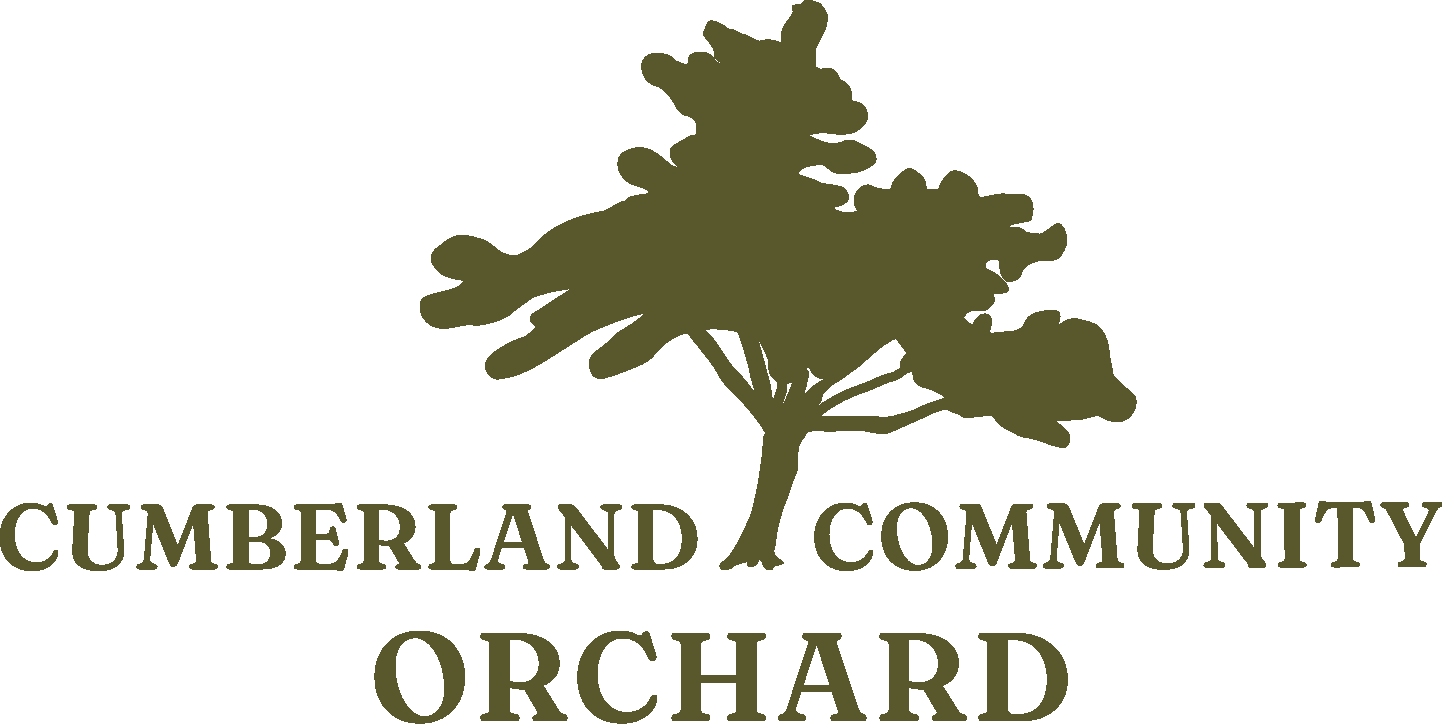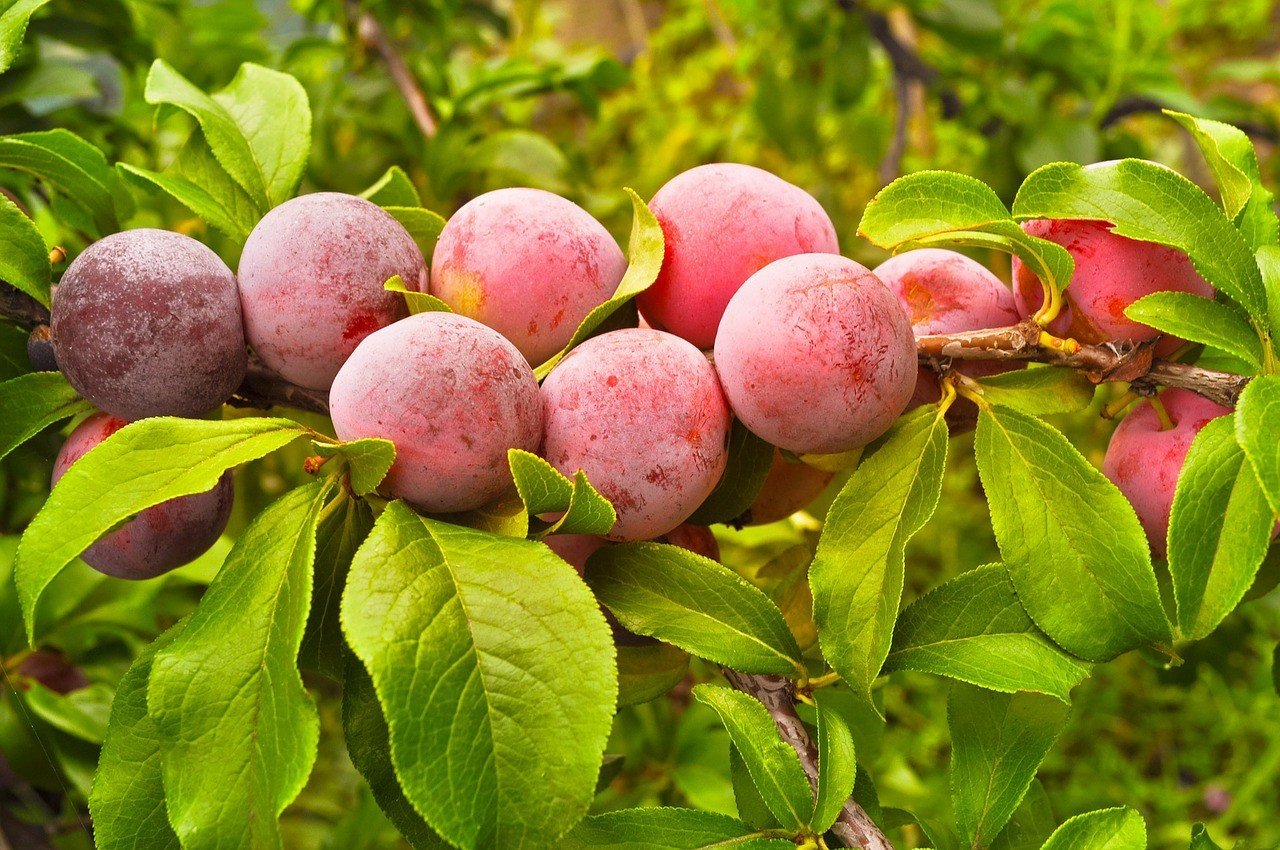Plums
Plums offer a sweet, nutritious treat while contributing to the orchard’s biodiversity
American Seedling
Prunus americana 15-20' Not a hybrid, but included here since it may be the best pollinator for hybrid plums.
Seedling plum that grows in thickets and produces very decent red, yellow and orange 1" fruit, suitable for fresh eating, canning and freezing. Spectacular white bloom in spring is highly ornamental. Red fall color. Plant singly as a graceful specimen or let the branches intertwine with other plums for maximum pollination, with one American plum for every 3-4 hybrid trees. Tends to sucker freely.
Extremely hardy. Z3.
Black Ice
Prunus spp. Midsummer. P. Lydecker [Prunus besseyi x (P. salicina Oka x P. s. Z’s Blue Giant)] University of Wisconsin, River Falls, 2006.
Large 2" round early-ripening high-quality hardy blue-black dessert plum. Very sweet juicy reddish-purple semi-freestone flesh. Precocious and productive tree with a naturally compact growth habit.
Bred by Brian Smith, whom we visited on a fruit exploration trip in the Upper Midwest. He graciously toured us through his amazing nursery in River Falls, Wisconsin. He was growing many of his plums in huge tubs, manipulating bloom time using greenhouses and coolers. This enabled him to cross species or varieties that would never normally flower together.
Though we’re not fans of plant patenting, we are pleased to offer his first major introduction. The literature recommends Toka or La Crescent as a pollinator. PPA. Z3.
Cocheco
Prunus spp. Midsummer. Purple Heart x unnamed red-leaf plum. Elwin Meader intro, Rochester, NH, 1968.
Red-orange medium-sized fruit with soft sweet pinkish flesh. One of the first to ripen midsummer. In a lengthy Maine Sunday Telegram article on Sept. 8, 1968, Meader said, “It’s an example of being able to have your cake and eat it. The new tree is beautiful enough to be an ornamental. It also has delicious fruit and windbreak value.” Red twigs and buds in winter, light pink flowers in spring, glossy red foliage all summer long. Even from 100' away, it is a strikingly beautiful sight.
Relatively large tree with an upright growth habit. May be self-pollinating, though we recommend treating it like other hybrid plums. Z4.
Grenville
Prunus spp. Late Summer. P. sal. Burbank x P. nigra. Canada Dept of Ag Res Stn, Ottawa, 1941.
Large dark rosy-red clingstone fruit. Yellow flesh has excellent flavor. Vigorous early-blooming tree. Most of the hybrid plums were developed using Asian varieties crossed with P. americana. Grenville was bred using P. nigra, the extremely hardy Canada plum. Pollination requirements are the same as other hybrids.
Like P. nigra, very hardy. Z3.
Hanska
Prunus spp. Summer. P. a. x P. simonii. NE Hansen intro, Brookings, SD, 1908.
Medium-sized bright red fruit with a heavy bluish bloom. Firm fragrant yellow semi-freestone flesh. When cooked, the fruit has a strong apricot-like flavor reminiscent of its Chinese “apricot plum” parentage. The fruit resembles its sister seedling, Kaga. Hanska is the Sioux word for ‘tall’ referring to the tree’s fast growth in the nursery. We agree! It’s grown quite rapidly in our orchard. Though Hansen gave it a lengthy write-up in his 1927 Plant Introductions Bulletin, Hanska all but disappeared and remains one of the rarest of his introductions. We’re happy to offer it in our catalog.
Z3/4.
Kahinta
Prunus spp. Mid-Late Summer. Luther Burbank’s Prunus salicina Apple x P. americana Terry. SD, 1912. Another intro by plant breeder NE Hansen.
Large 1½" roundish slightly pointed fruit is flattened at the stem end. Brilliant red-purple tart skin and translucent yellow-orange tart but quite flavorful flesh. Easy to peel; peeled fruit looks like a peeled tangerine. Or you can bite a small hole in the skin and suck out the juicy flesh. Clingstone. Very good for fresh eating or canning.
Medium-sized spreading tree. Kept pruned, our 20-year-old tree remains about 8' tall. Bears more reliably than most other varieties in our orchard. Kahinta is the Sioux word for ‘sweep.’
Rare. Z3.
Obilinya
Prunus spp. Midsummer. P. cerasifera x P. salicina. Origin obscure but cataloged at the Nikitsky Botanical Gardens, Republic of Crimea.
Purple-red fruit with yellow-bleeding-to-red sweet firm flesh is excellent fresh eating. Grower Jesse Stevens says it has “skin less sour than many other hybrids, but still a good amount of zing.” Seems plenty hardy once established with good pest and disease resistance.
Blooms early and pairs well for pollination with Lavina and Purple Heart. Ripens mid-August in central Maine. Highmoor Farm, UMaine’s Ag Experiment Station, gives it an overall rating of “excellent!”
Z4/5.
Pipestone
Prunus spp. Late Summer. MN 218 [Prunus salicina Burbank x (P. sal. x P. americana Wolf)] U Minn, 1942.
Juicy yellow-fleshed clingstone plum with excellent sweet flavor. Tough yet thin skin peels easily. Large deep red fruit with a golden blush presumably named in honor of the beautiful red catlinite rock of Pipestone, Minn., a sacred site to First Nations people.
Vigorous reliable hardy tree. Z3.
Toka
Prunus spp. Late Summer. (Prunus americana x Prunus simonii) NE Hansen intro, SD Exp Stn, 1911.
Rosy red fruit, up to 1½" in diameter, mottled with darker purplish-red and covered with a faint bloom. Grower Don Johnson’s comment: “Talk about flavor: candy plum.” Sweet, distinctive, meaty and flavorful. Not really juicy. Somewhat freestone.
Extremely vigorous tree blooms heavily every year. Diligent pruning may be required to keep it from becoming a bit of a monster.
Considered a good pollinator for other hybrid plums because of its long bloom period. Z3.









